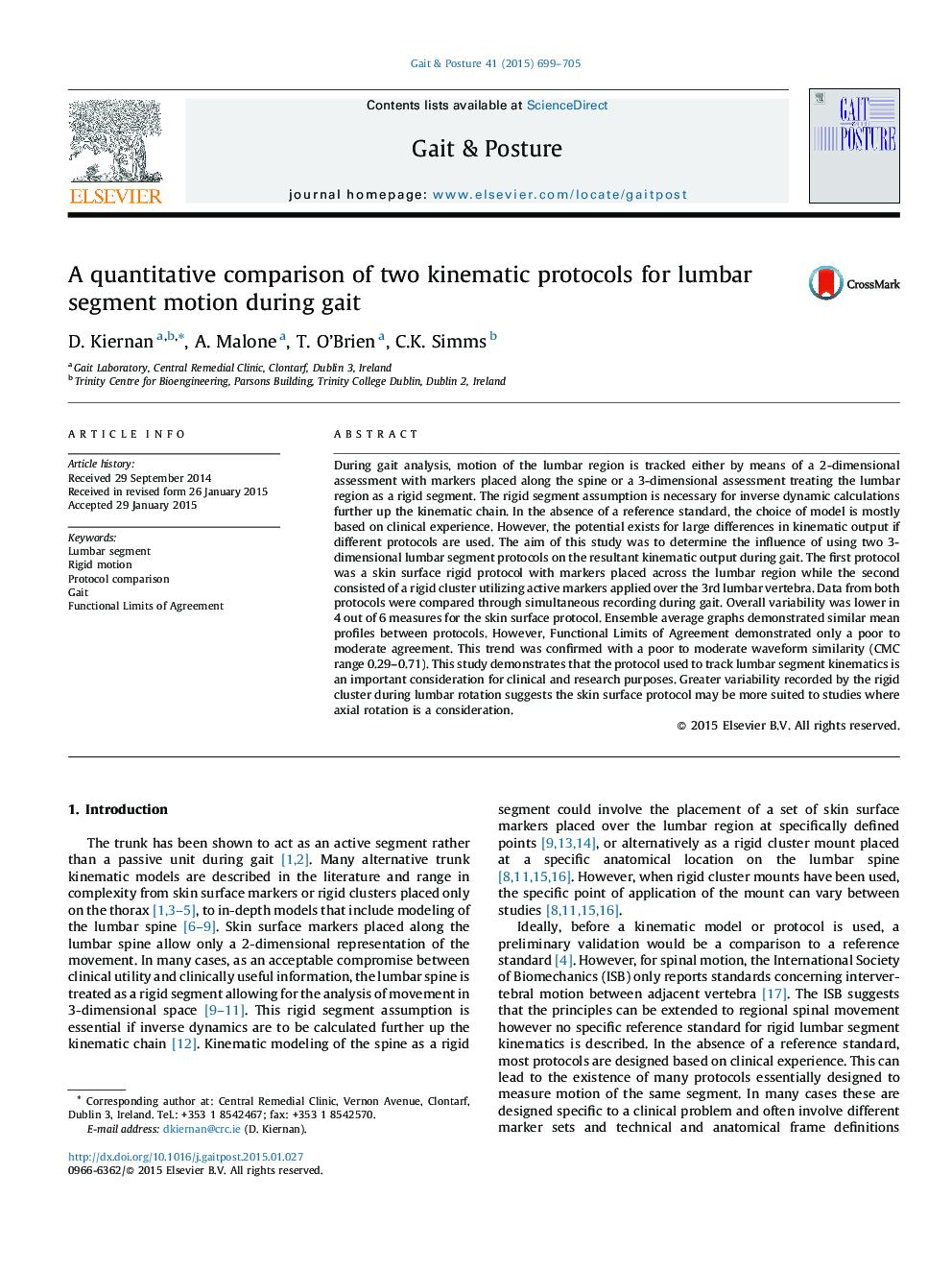| Article ID | Journal | Published Year | Pages | File Type |
|---|---|---|---|---|
| 6206201 | Gait & Posture | 2015 | 7 Pages |
â¢Large differences in kinematic output were measured between protocols during gait.â¢Functional Limits of Agreement demonstrated only a poor to moderate agreement.â¢The skin surface marker protocol may be more suited to studies of axial rotation.
During gait analysis, motion of the lumbar region is tracked either by means of a 2-dimensional assessment with markers placed along the spine or a 3-dimensional assessment treating the lumbar region as a rigid segment. The rigid segment assumption is necessary for inverse dynamic calculations further up the kinematic chain. In the absence of a reference standard, the choice of model is mostly based on clinical experience. However, the potential exists for large differences in kinematic output if different protocols are used. The aim of this study was to determine the influence of using two 3-dimensional lumbar segment protocols on the resultant kinematic output during gait. The first protocol was a skin surface rigid protocol with markers placed across the lumbar region while the second consisted of a rigid cluster utilizing active markers applied over the 3rd lumbar vertebra. Data from both protocols were compared through simultaneous recording during gait. Overall variability was lower in 4 out of 6 measures for the skin surface protocol. Ensemble average graphs demonstrated similar mean profiles between protocols. However, Functional Limits of Agreement demonstrated only a poor to moderate agreement. This trend was confirmed with a poor to moderate waveform similarity (CMC range 0.29-0.71). This study demonstrates that the protocol used to track lumbar segment kinematics is an important consideration for clinical and research purposes. Greater variability recorded by the rigid cluster during lumbar rotation suggests the skin surface protocol may be more suited to studies where axial rotation is a consideration.
